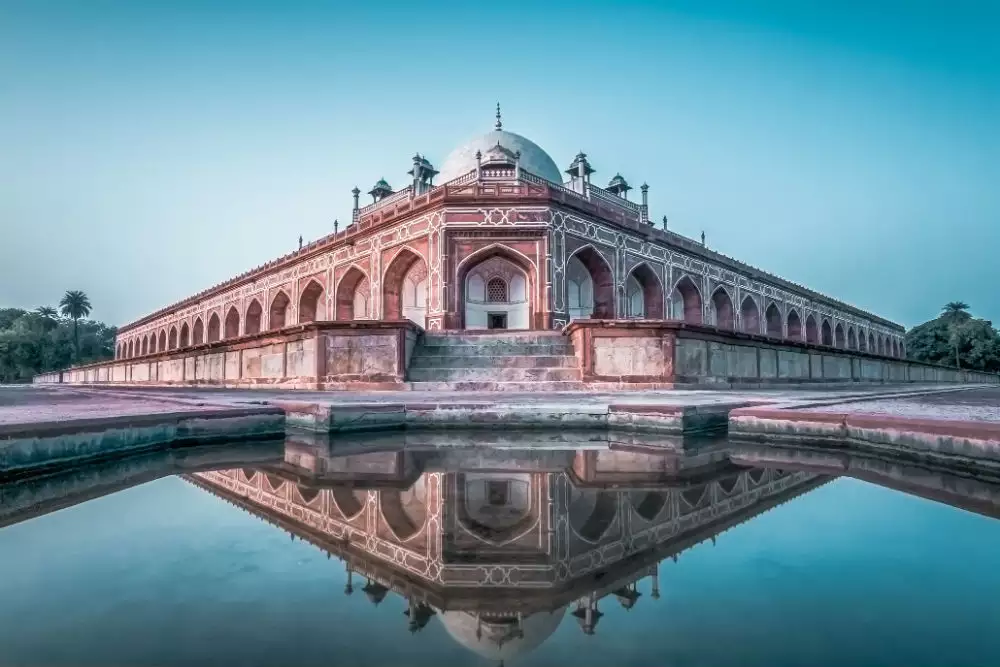Explore Humayun’s Tomb, Delhi During Golden Triangle Tour

Explore Humayun’s Tomb
This tomb, built in 1570, is of great cultural significance as it is the first garden tomb on Indian soil. He inspired many great architectural projects, culminating in the construction of the Taj Mahal. if you want to enjoy sightseeing in Golden Triangle Tour. So, you should opt the best Golden Triangle India Tour Package by the tour company. Here in this article, we talk about the explore Humayun’s Tomb, Delhi during Golden Triangle Tour.
Outstanding Universal Value
The Short Form of Humayun’s Tomb
Humayun’s Tomb, Delhi was the first of the great dynastic mausoleums to be in line with Mughal architecture and the architectural style reached its peak 80 years after the Taj Mahal. As a result, Humayun’s Tomb is located in 27.04 ha. Also, it includes other contemporary, 16th century Mughal garden tombs such as Nila Gumbad, Isa Khan, Bu Halima, Afsarwala, Barber’s Tomb and the complex that housed the staff for Humayun’s Tomb, the Arab Serai.
Humayun’s Tomb was built in the 1560’s, with the help of Humayun’s son, the great Emperor Akbar. Persian and Indian workers worked together to build the garden tomb, which is far larger than any other tomb built in the pre-Islamic world. Humayun’s garden tomb is an example of a charbagh (a four-sided garden with the four rivers of the Quranic paradise symbolizing it), with pools connected to the rivers. The garden is entered through high doors on the south and west sides and through gaps in the center of the east and north walls.
The mausoleum itself stands on a high, broad platform with two deep bay rooms on four sides. It is a rectangular octagon plan, with four long sides and chamfered edges. The 42.5 m high double dome is clad in marble flanked by pillar kiosks (chhatris) and the houses of the central chhatris are decorated with bright colored tiles. The center of each side is deepened by large arched columns and a series of smaller ones set into the face.
Dressed In Red Sandstone
The interior is a large square room with sections of the roof connected by galleries or curtains. This square plan is repeated on the second floor. The structure is dressed stone dressed in red sandstone with white and black marble borders.
Humayun’s Garden Tomb is known as the ‘bed of the Mughals’ in the chambers where over 150 members of the Mughal family are buried.
The tomb is located in an important archaeological site, adjacent to the Shrine of the 14th century Sufi Saint, Hazrat Nizamuddin Auliya. As it is considered a good place to be buried next to a saint’s tomb, seven centuries of tomb construction has made the area the most important cluster of medieval Islamic buildings in India.
Integrity
Among the listed objects are the Humayun’s Tomb, which includes gates, pavilions and additional structures before entering Humayun’s Tomb, such as the Barber’s Tomb, Nila Gumbad and its garden area, the Garden Tomb of Isa Khan and other contemporary structures of the 16th century such as Bu The garden-tomb of Halima and the garden Afsarwala-Tomb. All these attributes reflect the global value of the property. The cemeteries in the complex have been respected throughout their history and have maintained their original character and purpose. Recent land conservation efforts, following the land route to the city, have sought to maintain this condition and ensure the preservation of the physical fabric, increasing its importance during restoration and the architectural techniques used by Mughal builders.
Authenticity
The authenticity of Humayun’s Tomb lies in the mausoleum, other structures and the garden that retains its original form and design, materials and location.
The cemetery and its surrounding structures are in their original condition, with few interventions and of high quality. The conservation work carried out on the structures focuses on the use of heritage materials such as lime mortar, building materials and methods to restore integrity especially by removing the materials of the 20th century such as concrete slabs from the roof and replacement with lime-cement, removal of cement plaster from basements and replacement with lime plaster in original models and removal of concrete from basement to reveal and redefine the original stone floor, and other such works. All garden cemeteries in the complex are maintained in the same way.
Maintenance And Management Requirements
As in other areas under the jurisdiction of the Archaeological Survey of India (ASI), protection is due through various laws such as the Ancient Monuments and Archaeological Sites and Remains Act 1958 and the Acts 1959, Ancient Monuments and Archaeological Sites and Remains (Amendment and Regulation. ) Act 2010, Delhi Municipal Corporation Act 1957, Land Acquisition Act 1894, Delhi Urban Art Commission Act 1973, Urban Land (Sealing and Regulation) Act 1976, Environmental Pollution Act, 1986, etc. The cemetery and its gardens have been the focus of a conservation project in collaboration with the Aga Khan Trust for Culture since 1997 and the gardens have been restored with running water in the first phase (1997-2003) and maintenance of the cemetery etc. Additional constructions have been done since 2007.
Running water is an important feature of the Mughal char-bagh and Humayun’s tomb, underground terracotta pipes, canals, fountains, water channels are some of the features of the gardens. Since the time of writing, major conservation efforts have been based on archaeological research, archival research and documentation, carried out on the garden by the Archaeological Survey of India (ASI) – Aga Khan Trust for Culture (AKTC) multidisciplinary group. to return runoff to the garden.
The availability of artwork will maintain its importance by adopting new materials. A core committee consisting of Director General of ASI, Director General ASI, Regional Director of ASI, Director (Conservation) and Archaeological Surveyor, ASI Delhi Circle will review all activities undertaken by the Aga Khan Trust for Culture. Landscaping activities are reviewed periodically.